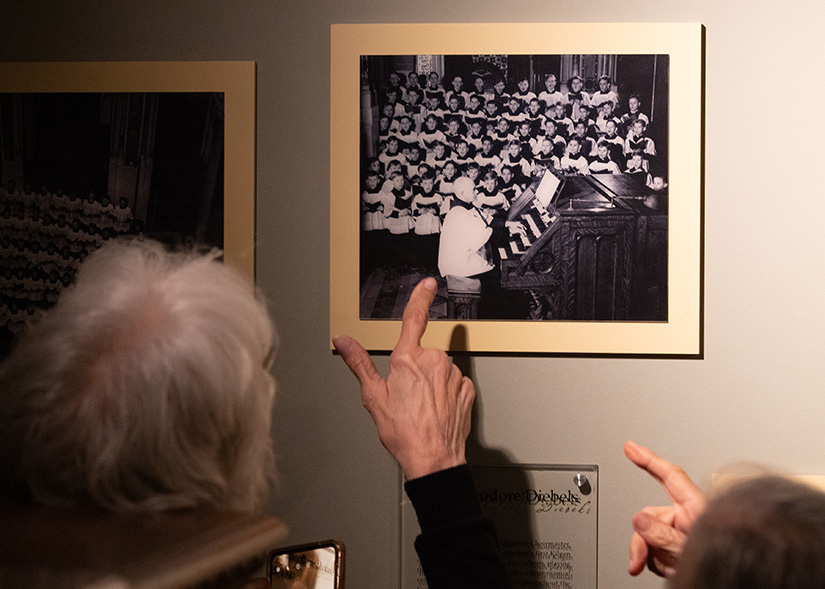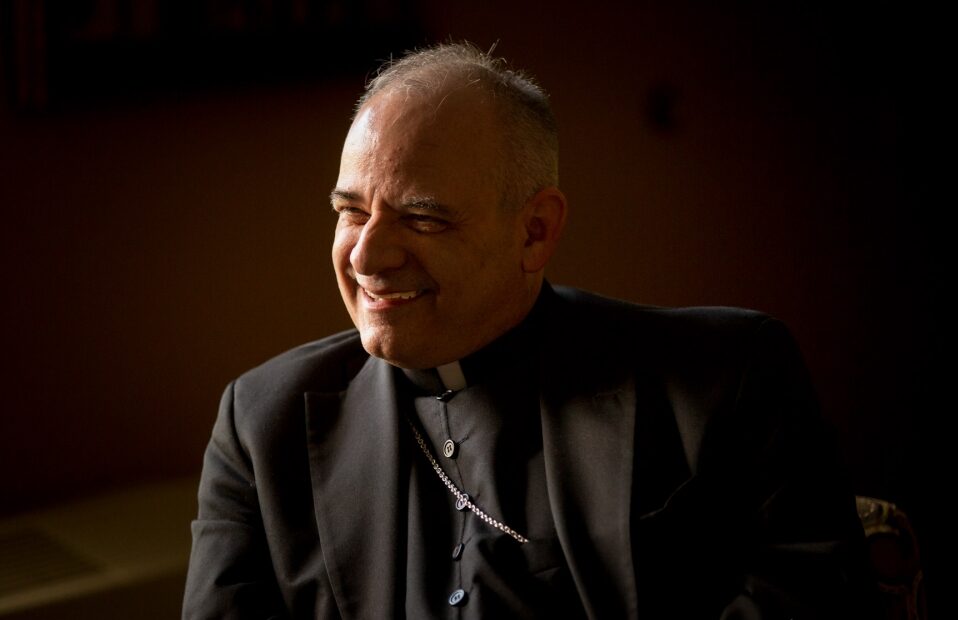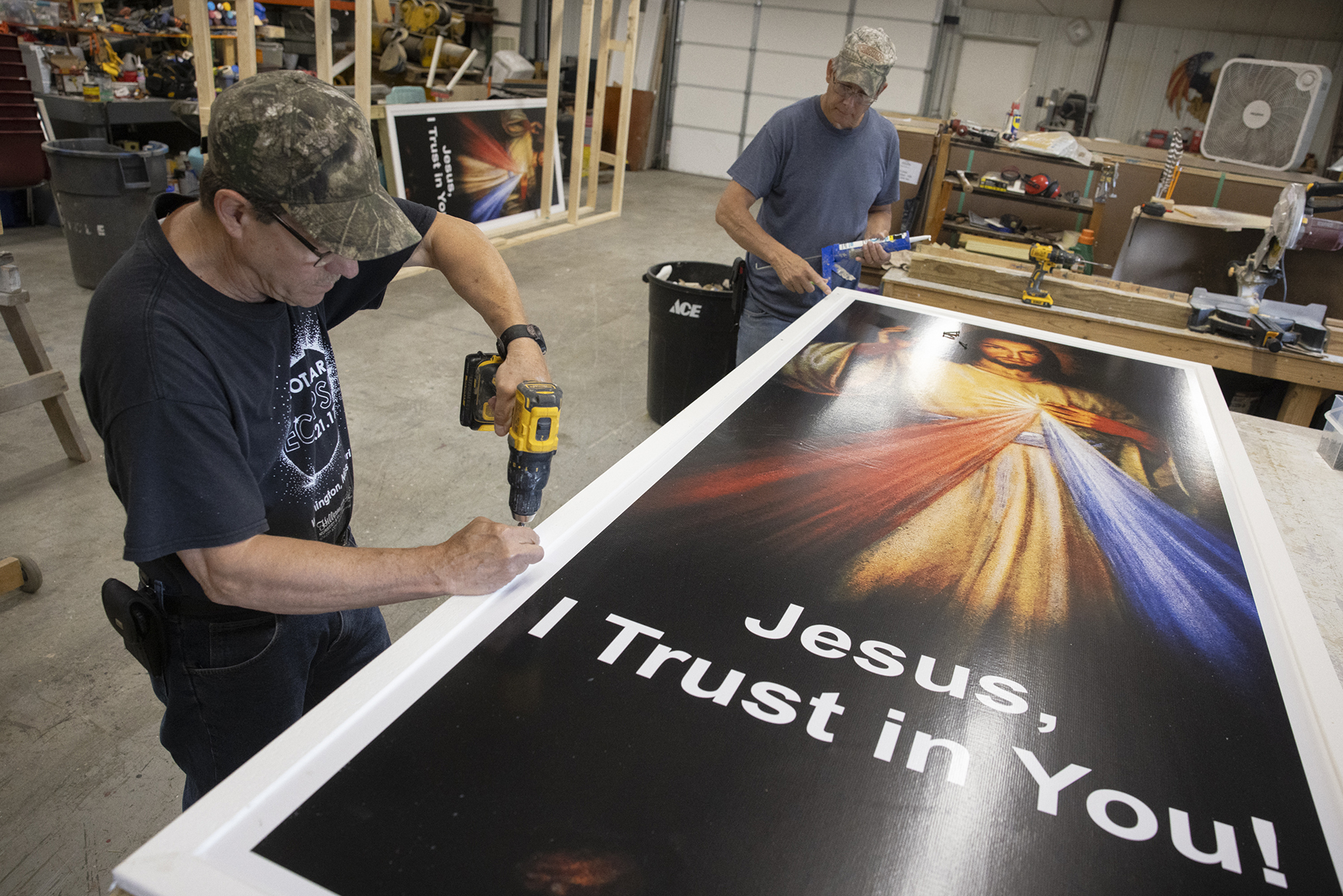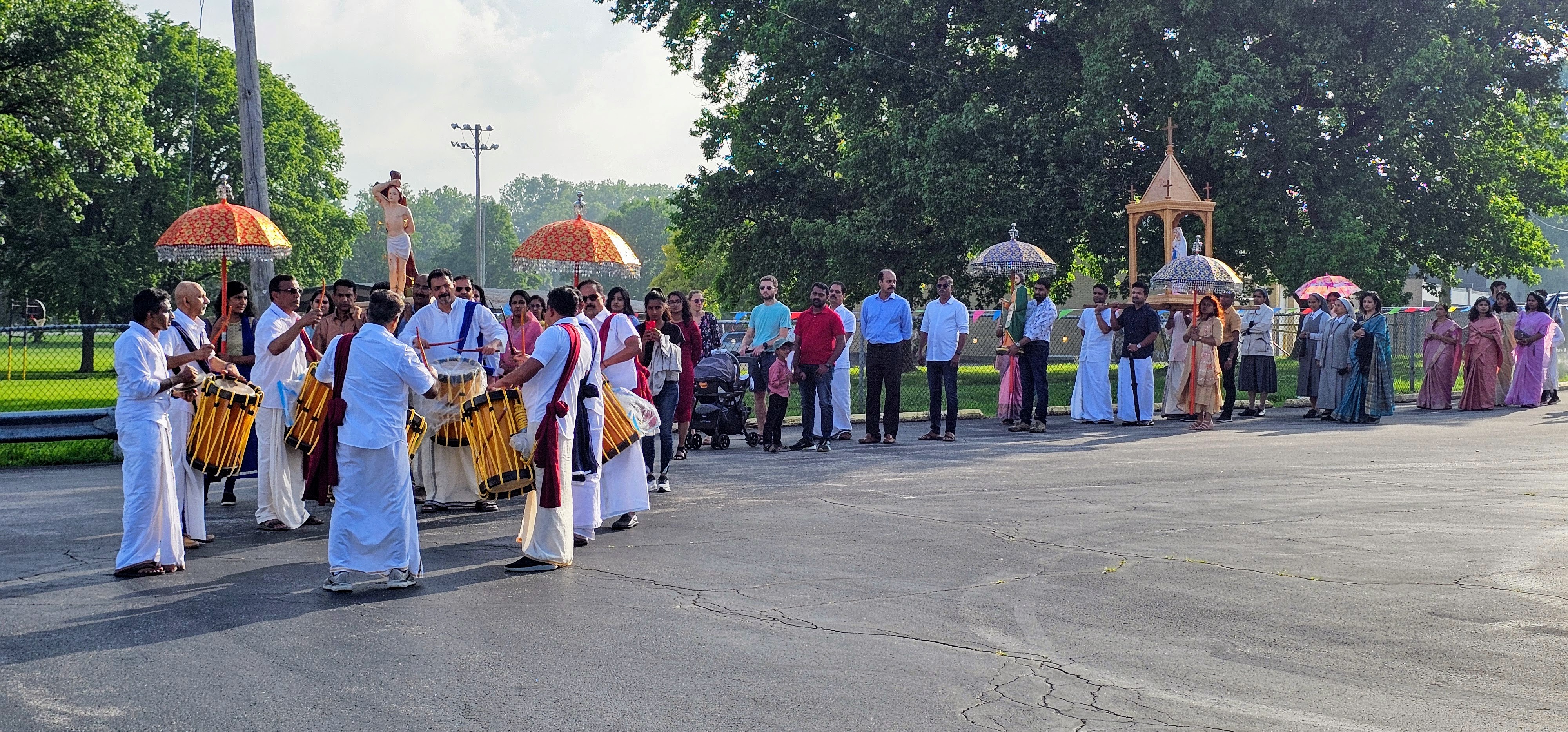Hearing the majestic sounds where their ancestor once played

Descendants of William Diebels, first music director of the Cathedral Basilica of Saint Louis, visit the cathedral, share glimpses of history
Most tours at the Cathedral Basilica of Saint Louis inspire gazes of awe and wonder as visitors marvel at the breathtaking mosaic designs from floor to domed ceilings.

But on a recent tour at the cathedral basilica, a visiting group was eager to see something else: the cathedral basilica’s centerpiece Kilgen organ and its majestic sound.
That’s because most of the visitors in the tour group were descendants (and their spouses) of William Theodore Diebels, the cathedral’s first music director, who served from 1915 to 1939. The family reunion included 10 relatives from California, Florida, Louisiana, Kentucky and Maryland, seven of whom are Diebels’ grandchildren.
Diebels was a native of Holland and immigrated to the United States at the turn of the 20th century. The first Mass was celebrated at the cathedral in 1914, with Diebels arriving the following year. While it’s unclear how he got the job at the cathedral, he was considered by all accounts an accomplished organist, composer and conductor.
At the cathedral, Diebels was the principal organist, organized and directed the men’s and boy’s choirs and composed music for special services. He also was a professor of music at Washington University in St. Louis and was considered a local authority on Church music. He died in 1940 at the age of 64, after becoming ill with pneumonia.

Diebels was the first of five music directors at the cathedral basilica over its 108-year history. In June 2022, Andrew Kreigh was named the newest music director. His task has been to rebuild the Archdiocesan Choir, Cathedral Schola Cantorum and Cathedral Choir, all of which declined in membership during the pandemic.
Kreigh and cathedral organist Ben Blasingame met with the tour group to show them the Kilgen organ console behind the altar and play a sampling of music. While it wasn’t the same console that Diebels would have used (that one no longer exists), several of the original ranks — rows of pipes that make the same sound at different pitches — from 1915 are still in use.
Diebels’ granddaughter Stephanie McAllister teared up as she listened to the grand sounds of the organ rising into the air. Blasingame played a sampling of the hymn, “All Creatures of Our God and King,” and a small part of the fifth organ symphony of Charles-Marie Widor.
“I was just so touched, hearing the music,” she said.

Adam Hartmann, a great-grandson of Diebels, visited with the cathedral basilica’s then-music director John Romeri in 2007 and donated some of the original music that Diebels composed in the late 1800s to early 1900s. During the family’s visit in May, the family also donated a file of old photos, letters and poems that Diebels wrote.
What’s known about Diebels is that he was raised in a small village in Holland, primarily a Protestant country at the time. Family research uncovered that he attended a Catholic seminary in Leuven, Belgium, but left with just one year of formation remaining.

“He had a fascination with Latin,” said grandson Peter Hartmann. “He would write letters to his friends in the seminary in Latin, because he loved the language so much.”
While it’s unknown why Diebels came to St. Louis, the family knows that he taught piano lessons, along with his teaching duties at Washington University.
“He was in a perfect position — someone who had several years of seminary training and had this deep knowledge of Church music and Latin,” Hartmann said. “He was an ideal person to take the role” at the cathedral in St. Louis. “Whether they found him, or he found them, we don’t know.”
Diebels composed in 1933 “Illyria,” an operetta based on Shakespeare’s “Twelfth Night,” with a libretto written by his son-in-law, Maurice Hartmann (Peter’s father), who was a Shakespeare scholar. It never made it to production due to the Great Depression; decades later, it was uncovered and produced, with a premiere at the Kentucky Opera House in 2015.
Most tours at the Cathedral Basilica of Saint Louis inspire gazes of awe and wonder as visitors marvel at the breathtaking mosaic designs from floor to domed ceilings. Descendants of … Hearing the majestic sounds where their ancestor once played
Subscribe to Read All St. Louis Review Stories
All readers receive 5 stories to read free per month. After that, readers will need to be logged in.
If you are currently receive the St. Louis Review at your home or office, please send your name and address (and subscriber id if you know it) to subscriptions@stlouisreview.com to get your login information.
If you are not currently a subscriber to the St. Louis Review, please contact subscriptions@stlouisreview.com for information on how to subscribe.







